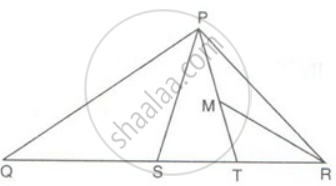Advertisements
Advertisements
प्रश्न
Prove that the diagonals of a parallelogram divide it into four triangles of equal area.
उत्तर

The diagonals of a parallelogram bisect each other.
Therefore, O is the mid-point of AC and BD.
Bo is the median in ΔABC.
Therefore, it will divide it into two triangles of equal areas
∴ ar(ΔAOB) = ar(ΔBOC)......(i)
In ΔBCD, CO is the median.
∴ ar(ΔBOC) = ar(ΔCOD).......(ii)
Similarly, ar(ΔCOD) = ar(ΔAOD)......(iii)
From (i), (ii) and (iii)
ar(ΔAOB) = ar(ΔBOC) = ar(ΔCOD) = ar(ΔAOD)
Hence, diagonals of a parallelogram divide it into foor triangles of equal areas.
APPEARS IN
संबंधित प्रश्न
ABCD is a parallelogram. P and T are points on AB and DC respectively and AP = CT. Prove that PT and BD bisect each other.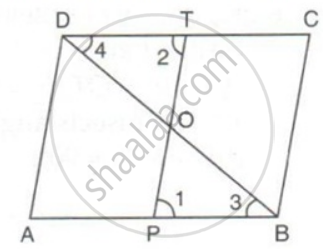
PQRS is a parallelogram. PQ is produced to T so that PQ = QT. Prove that PQ = QT. Prove that ST bisects QR.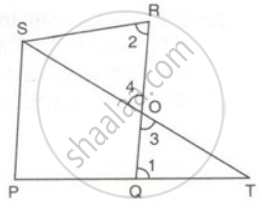
ABCD is a quadrilateral P, Q, R and S are the mid-points of AB, BC, CD and AD. Prove that PQRS is a parallelogram.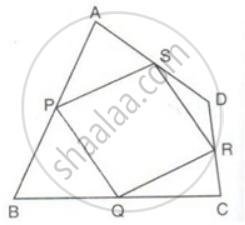
PQRS is a parallelogram. T is the mid-point of RS and M is a point on the diagonal PR such that MR = `(1)/(4)"PR"`. TM is joined and extended to cut QR at N. Prove that QN = RN.
In a parallelogram PQRS, M and N are the midpoints of the opposite sides PQ and RS respectively. Prove that
MN bisects QS.
ABCD is a trapezium in which side AB is parallel to side DC. P is the mid-point of side AD. IF Q is a point on the Side BC such that the segment PQ is parallel to DC, prove that PQ = `(1)/(2)("AB" + "DC")`.
In the given figure, PQRS is a parallelogram in which PA = AB = Prove that: SA ‖ QB and SA = QB.
In the given figure, PQRS is a trapezium in which PQ ‖ SR and PS = QR. Prove that: ∠PSR = ∠QRS and ∠SPQ = ∠RQP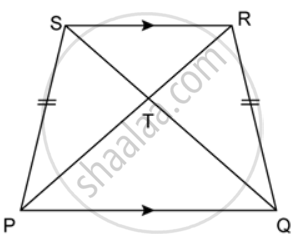
In the given figure, AB ∥ SQ ∥ DC and AD ∥ PR ∥ BC. If the area of quadrilateral ABCD is 24 square units, find the area of quadrilateral PQRS.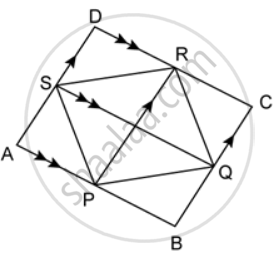
In ΔPQR, PS is a median. T is the mid-point of SR and M is the mid-point of PT. Prove that: ΔPMR = `(1)/(8)Δ"PQR"`.